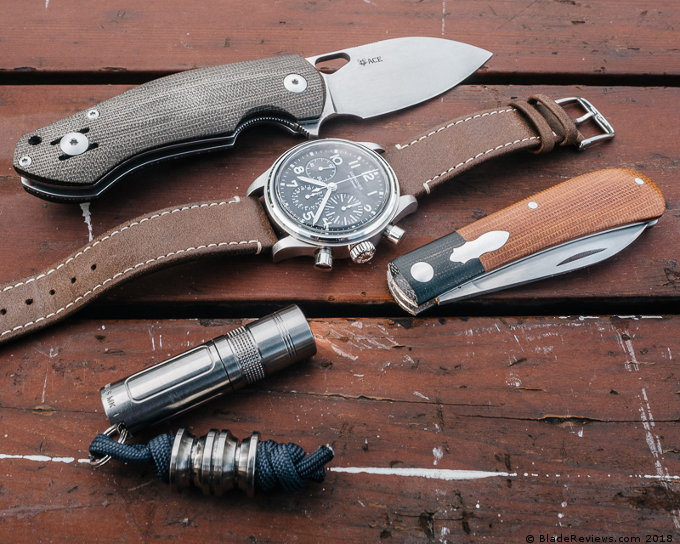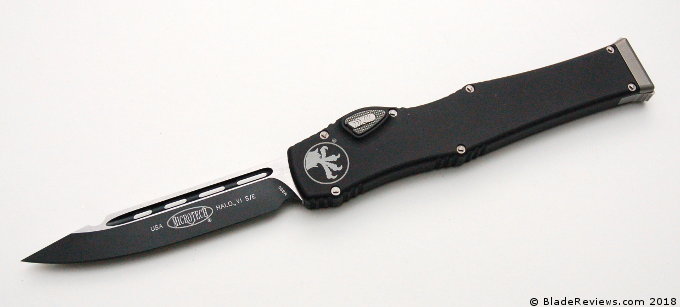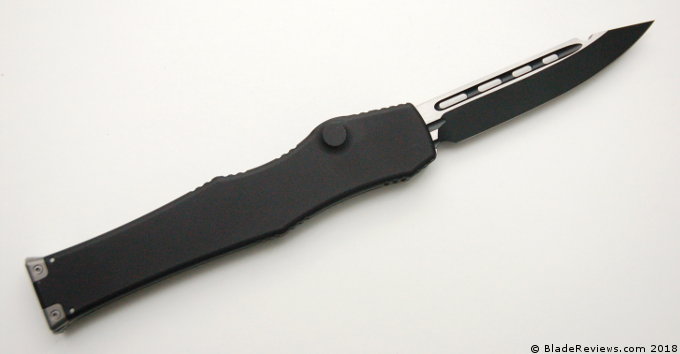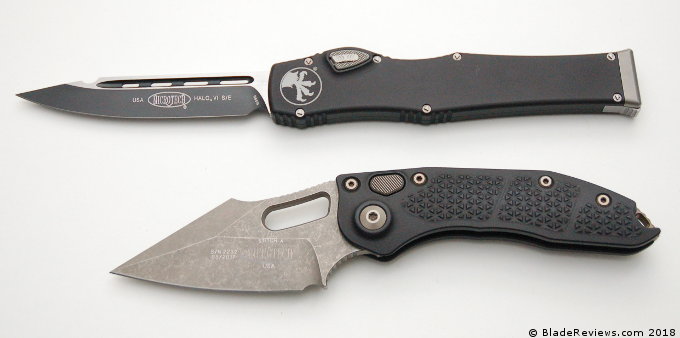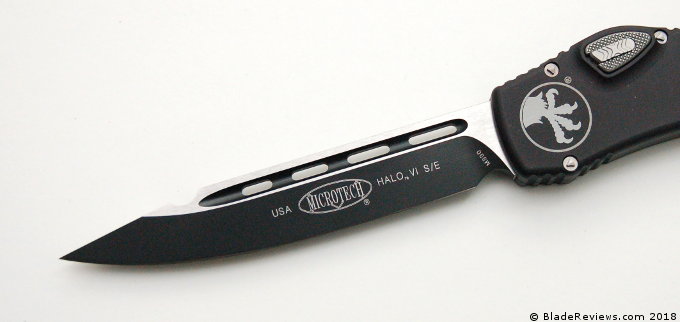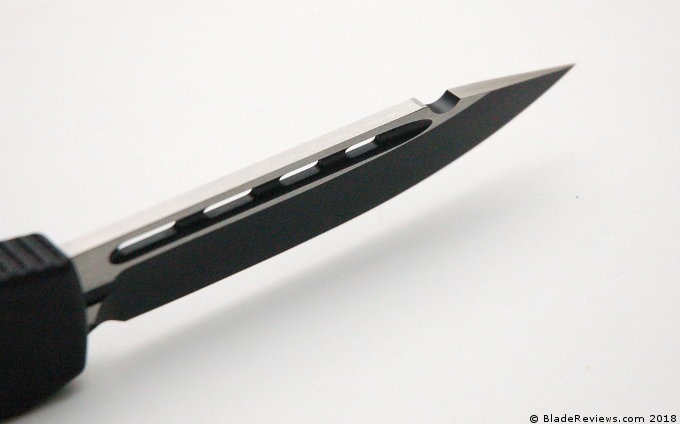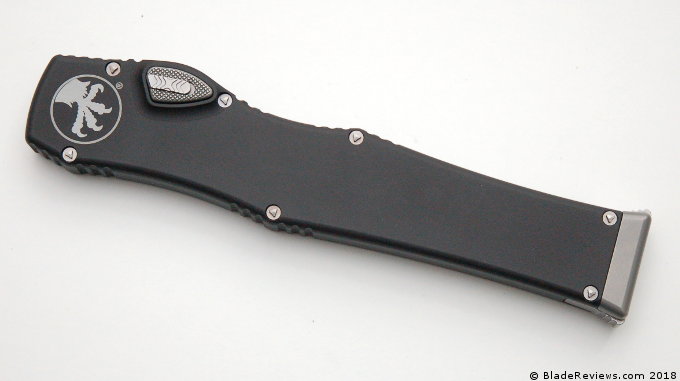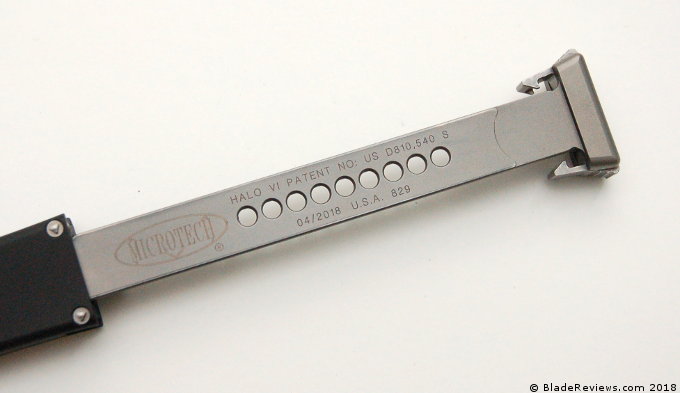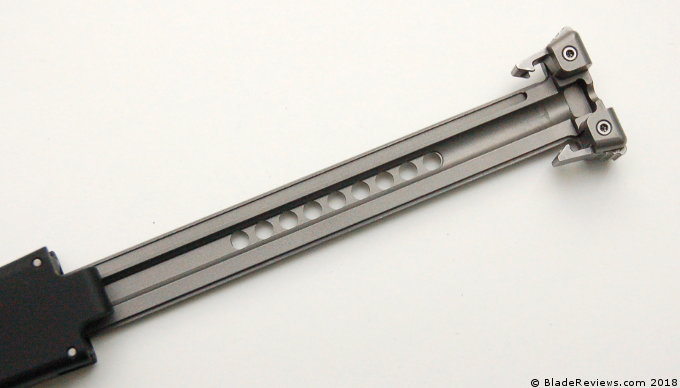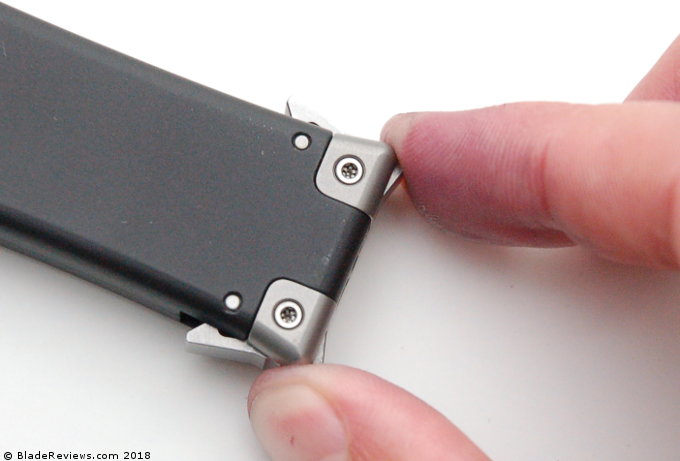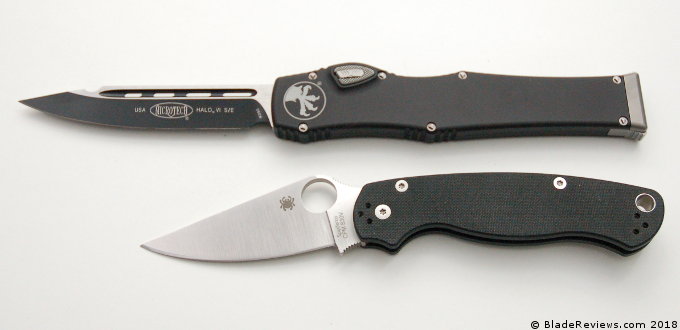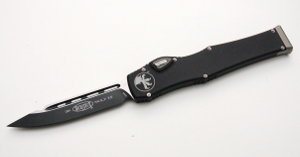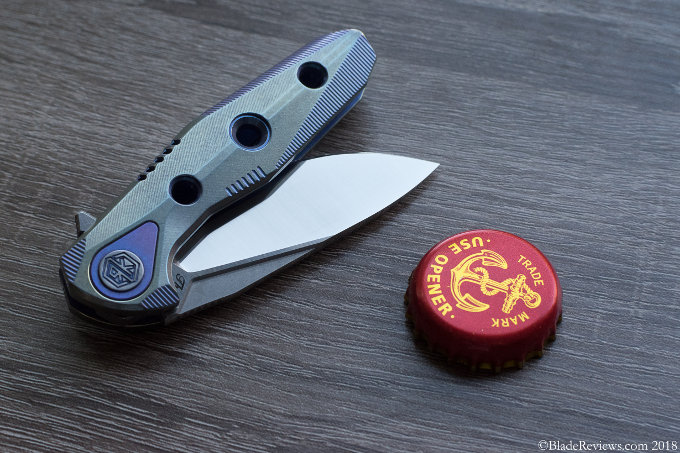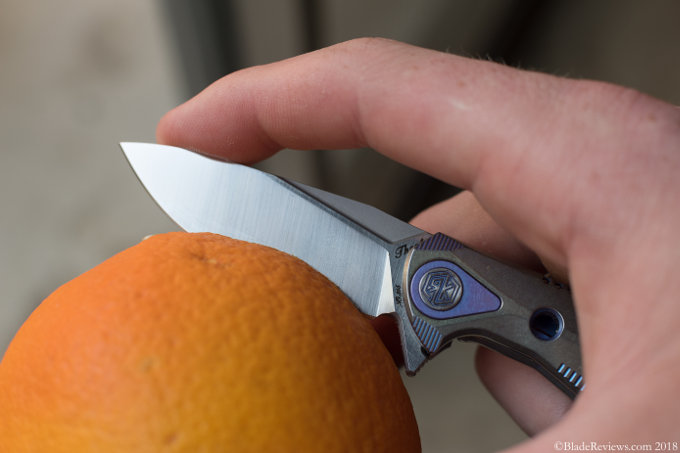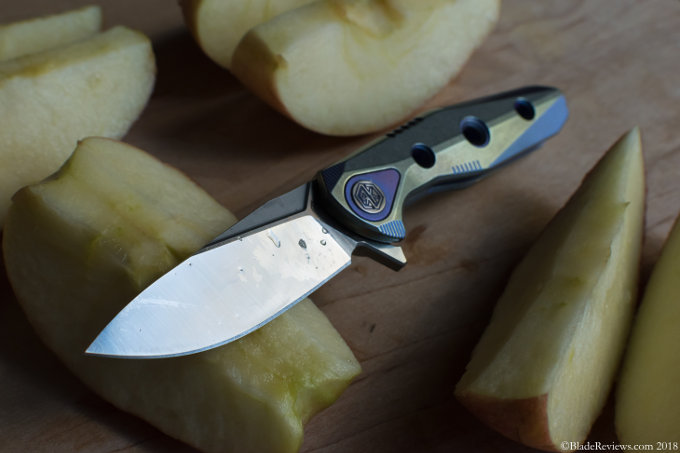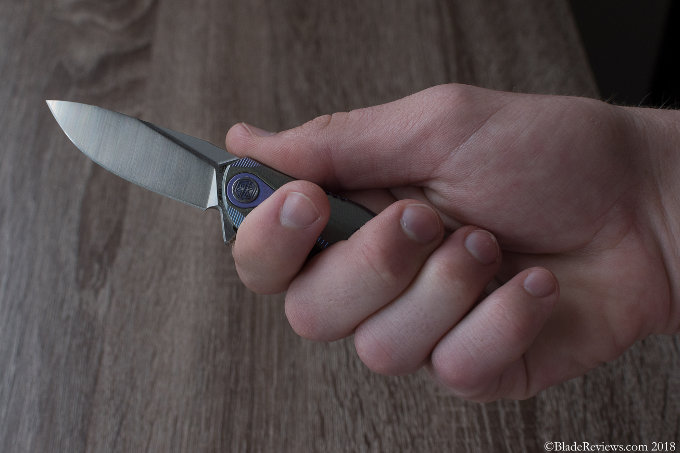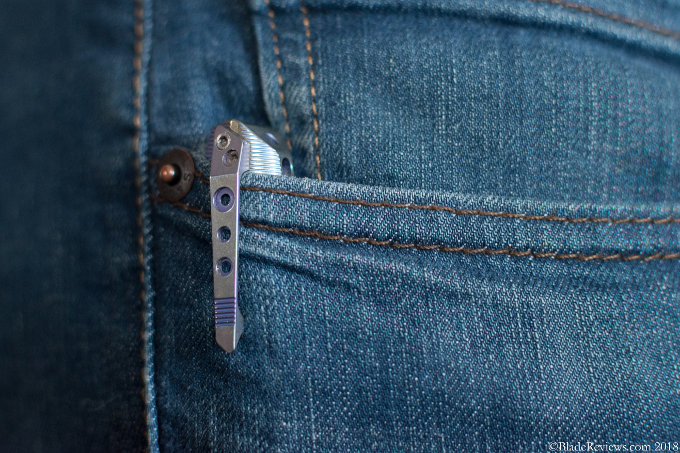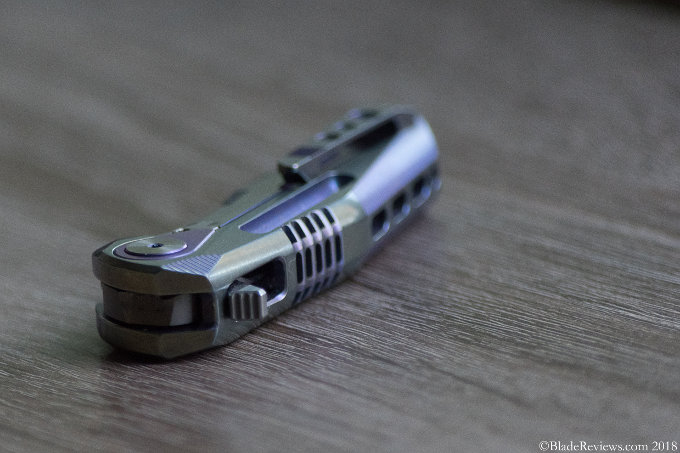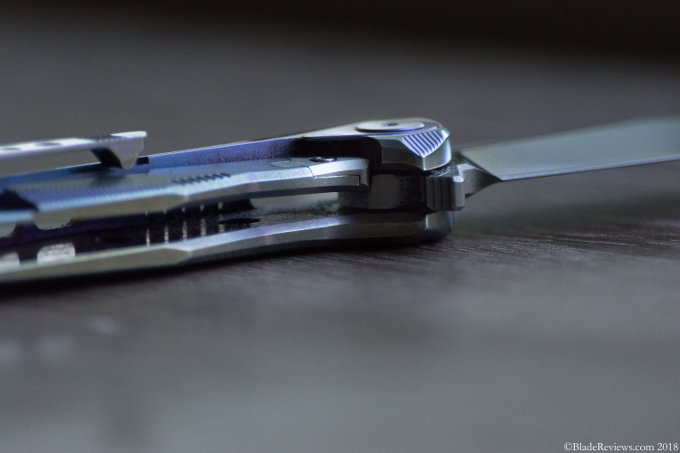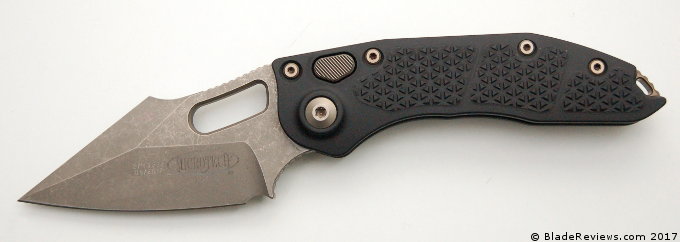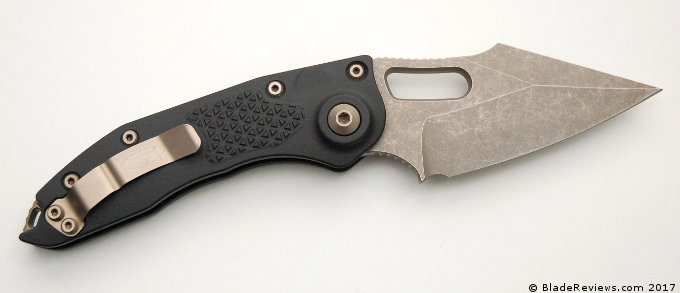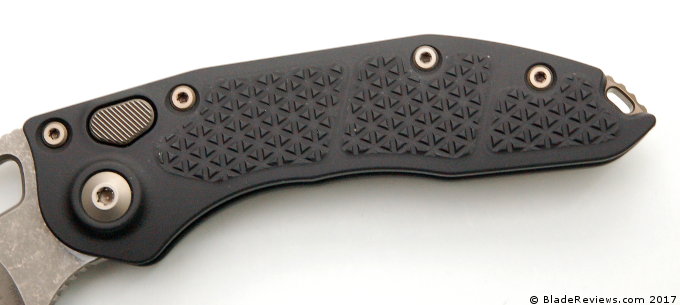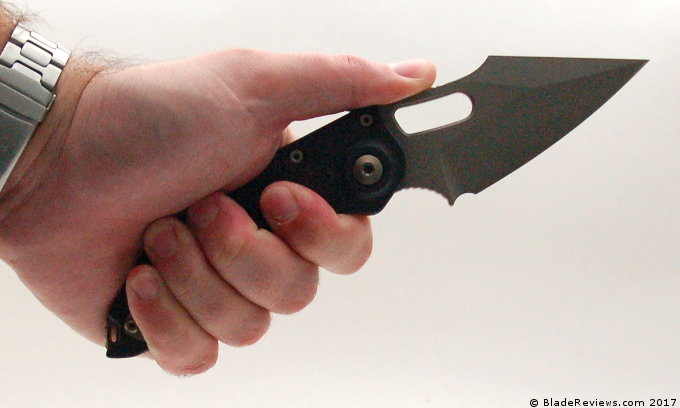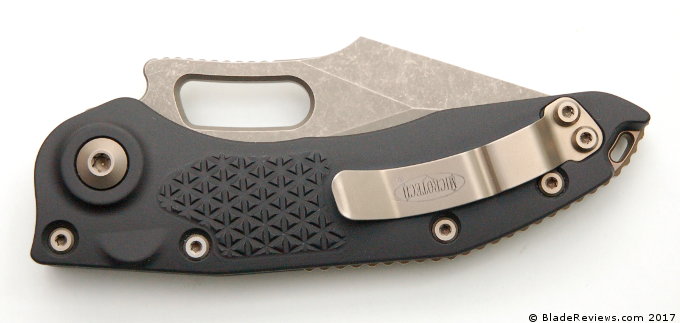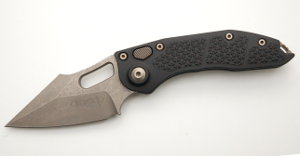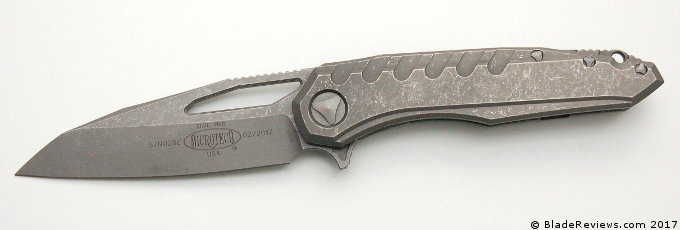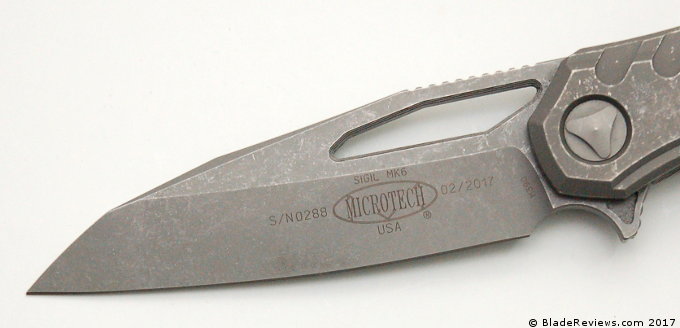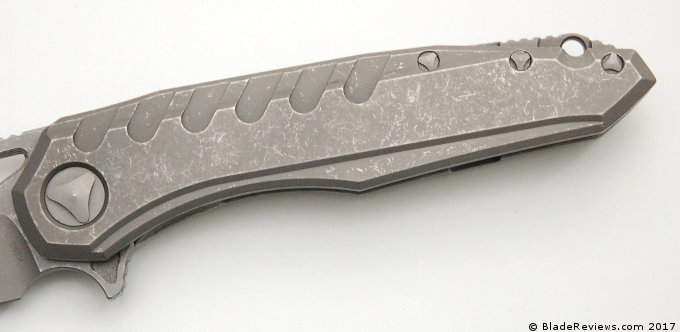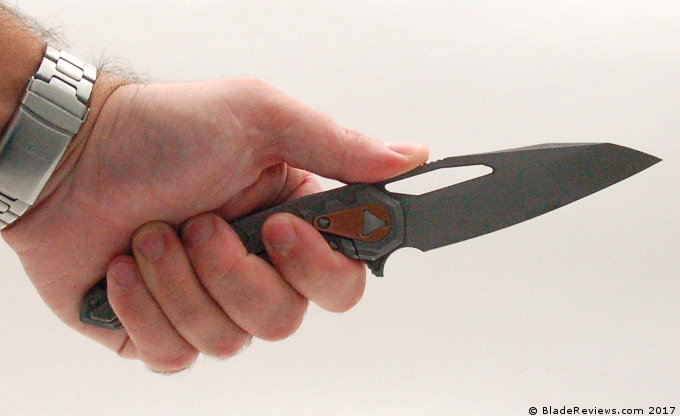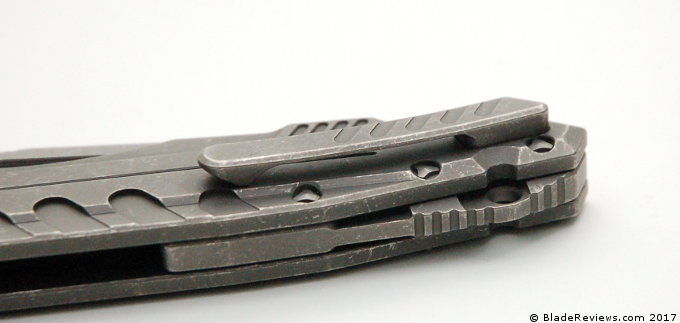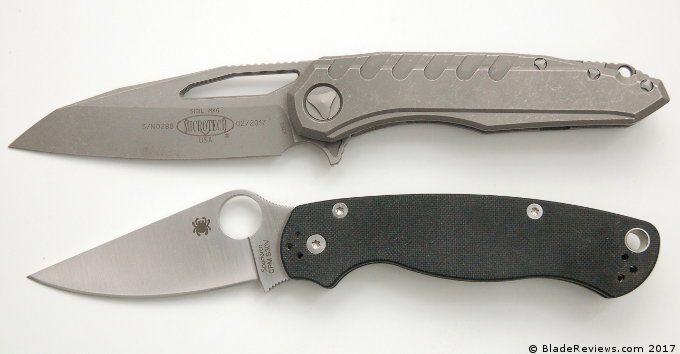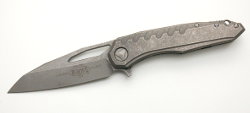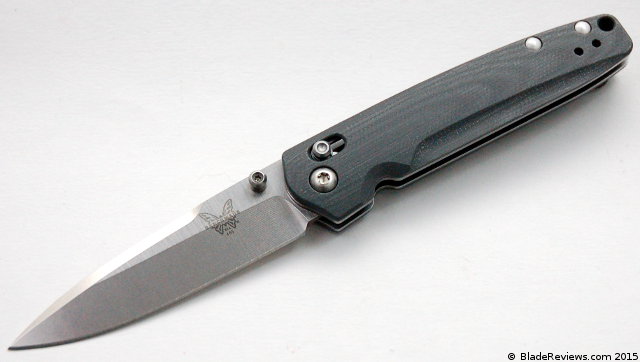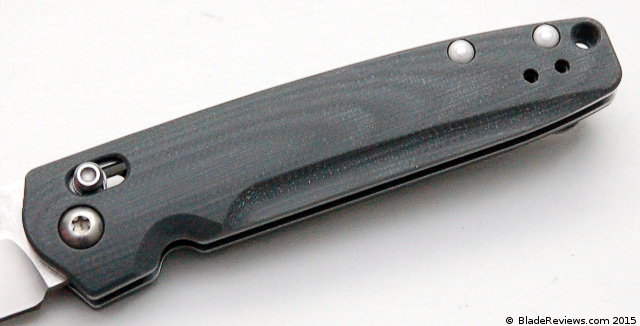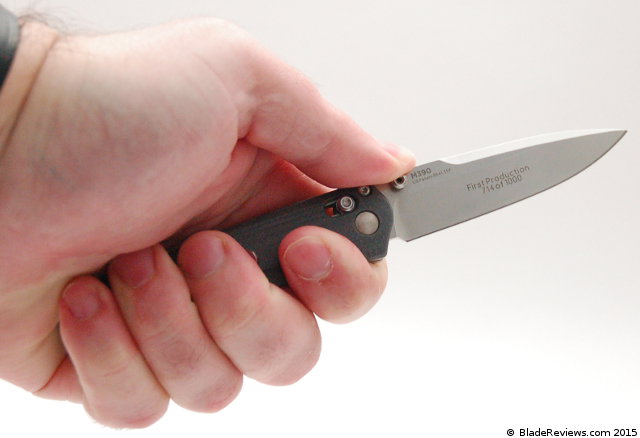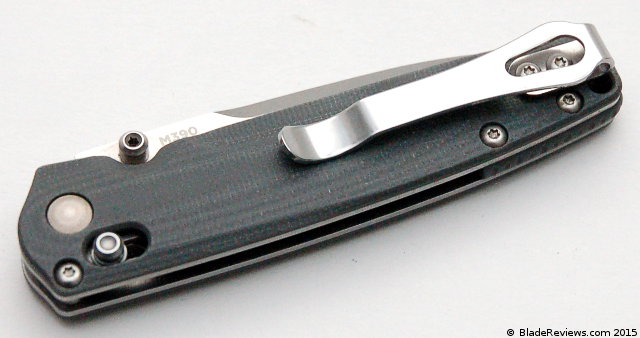Wandering the hallowed halls of BladeShow in Atlanta can be an overwhelming and even intimidating experience. Knives are (not literally) being thrown at you right and left and it’s difficult to remember what you’ve seen, what you wanted to see, and what you haven’t been able to find yet. Several things stuck out to me during my time in Atlanta and high amongst them was the Giant Mouse ACE Biblio.
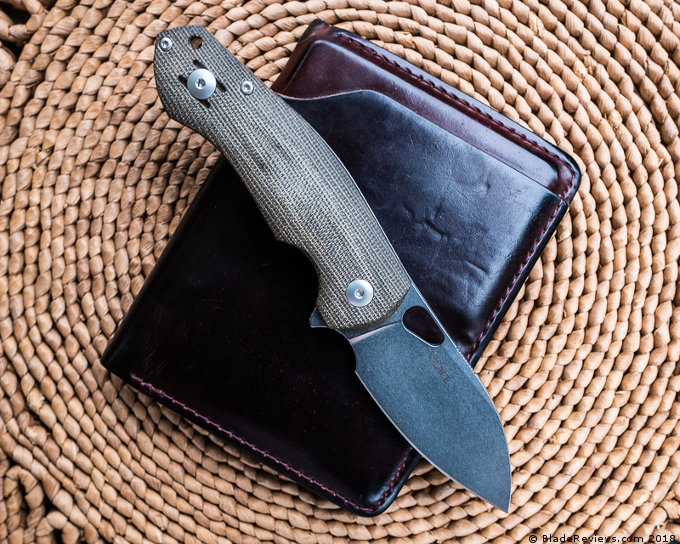
Buy the Giant Mouse ACE Biblio at BladeHQ
For those of you who haven’t heard of the Giant Mouse brand before, it is a collaborative production brand between custom knife makers Jens Ansø and Jesper Voxnaes; with the mission to design the highest quality production knife possible at the most reasonable price point they can. Over the past couple of years, I have had the opportunity to handle several knives from GM, but this was the first model that they produced with an ambidextrous clip which I need as a lefty.
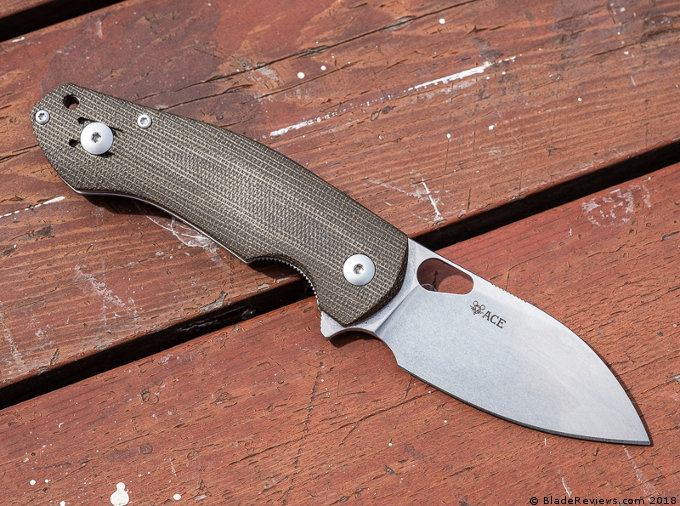
The ACE line from GM is an unlimited production run of knives whereas the pure Giant Mouse lines are limited in production to 400 pieces per model. Currently, GiantMouse is offering two different models under the ACE umbrella, the Biblio (reviewed here) and the newly released Nimbus.
But first, as always, some specs:
- Blade: 2.75” (with a cutting edge around 2.5”)
- OAL: 6.75”
- Thickness: .585”
- Blade Thickness: .119”
- Steel: M390
- Weight: 3.8oz
- Lock: Liner Lock
(These are my personal measurements made with my calipers and my faithful ruler, manufacturer’s published numbers may vary.)
Blade
The Biblio’s blade can best be described as a nicely bellied Wharncliffe. The blade has an ascending angle from the handle and terminates at a nice fine point. A nice thing about this shape is that when the edge is flat on a surface, the handle is raised above, allowing you to utilize the full length of the cutting edge without your hand interfering.
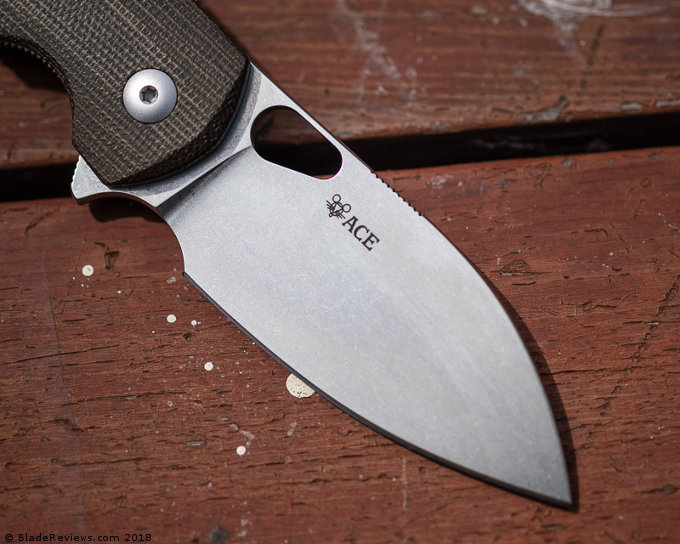
GiantMouse opted for a full flat grind as well, making this a pretty great utility slicer equally at home in the kitchen or campsite (not that these two need be separate). It’s ground thin and sharpened well straight from the factory. One last detail, GiantMouse has chosen to crown the spine on the blade, as I’ve stated countless times before this is a GREAT way to class up a knife.

The steel choice of M390 comes as an expected choice—the GiantMouse Knives are made in Maniago Italy by, I assume, Lionsteel who uses M390 in a lot of their models (Editor: I think Viper makes it, but I could always be wrong). I personally love this steel, it’s elementally similar to 20CV but manifests a finer grain that becomes apparent once you start sharpening it. I’ve always big a huge fan of M390 and request it whenever possible in custom orders. It’s been a solid performer, is very stain/wear resistant, and holds an edge well.
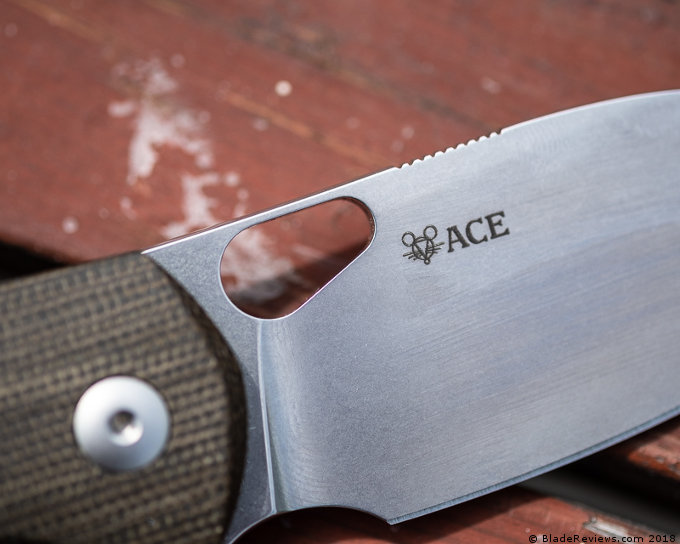
Handle, Ergonomics, and Pocket Clip
GiantMouse has opted to offer two handle material options for the ACE Biblio, either black G10 (which is accompanied by a satin blade finish) or green micarta (which comes with a stonewashed blade) both of which offer a nice grip and texture. The lines of the handle really lend themselves to locking into the hand, however, I do find that the grip itself is a little on the shorter side, with my pinky falling off the end—this is fixed if I choke up on the knife and utilize the large choil on the blade.
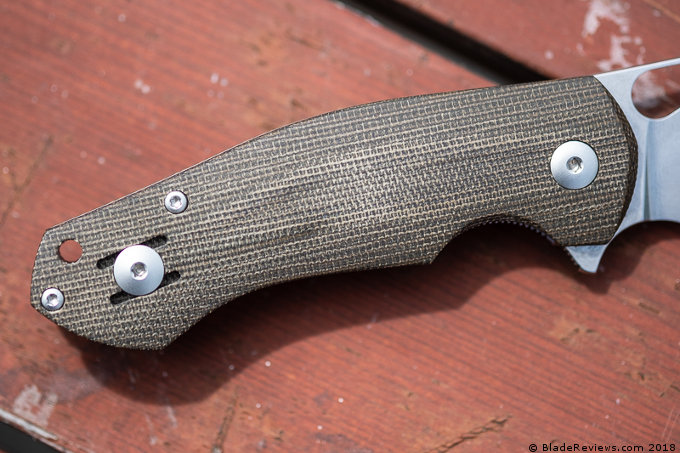
The clip is a simple wire clip that has the option for either “handed” carry. This is a simple method, but effective and has worked fine for me.
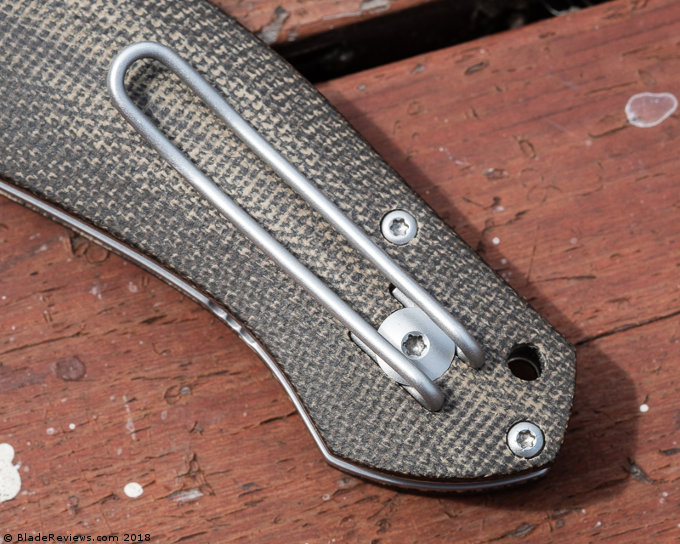
In the pocket, the GM is a squish on the thicker side, but being a liner lock you can’t expect much different. The ACE Biblio is far from the worst offender in this category.

Deployment and Lockup
I’ve always thought that having two different deployment methods on a knife generally meant that one took priority over the other. The Biblio, for example, has both an opening hole and a flipper tab but the detent is tuned for the flipper making it relatively difficult to open via the hole. That being said, using the flipper the action is smooth and snappy as expected with bearings.

The Biblio features your typical liner lock situation here, with a small bevel on each side of the lock to allow ambidextrous unlocking. My example engages fully, is solid in all directions, and hasn’t required any adjustment.
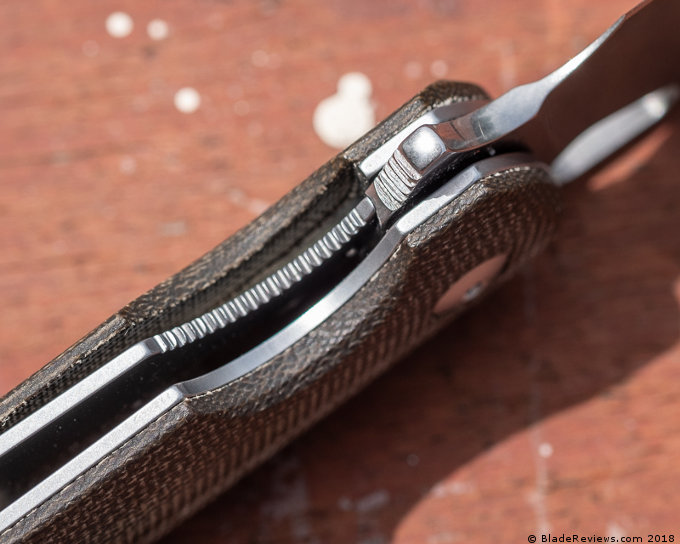
Giant Mouse ACE Biblio Review – Final Thoughts
Generally speaking, I think the GiantMouse project as a whole is a great exploration in what happens when two prestigious custom knife makers explore the production side of the knife-world without simply licensing a design or offering a mid-tech. Giant Mouse is a sole entity that operates within the design language of both Anso and Vox.
While I think that limiting the production runs of the of the GiantMouse offerings seems like a play for extrinsic value, it is nice to see that they have adopted an unlimited production run of affordable options.
The Biblio seems like a great choice for anyone that’s a fan of these two specific knife makers, wants a high-value option, or is looking for something that’s a little outside the “canon of normal knife brands.” The ACE Biblio is available (in Black G10) from BladeHQ for $175, and if you think about that… You’re getting an M390 flipper, designed by two well-respected makers, made to the exacting standards of (again what I assume to be) Lionsteel, for less than $200. Pretty hard to beat that these days, in my opinion.
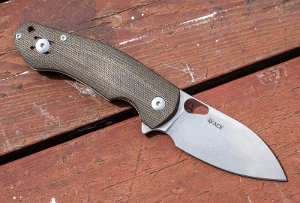
Giant Mouse ACE Biblio – From $175.00
From: BladeHQ
I recommend purchasing the Giant Mouse ACE Biblio at BladeHQ. Please consider that buying anything through any of the links on this website (including Amazon) helps support BladeReviews.com, and keeps the site going. As always, any and all support is greatly appreciated. Thank you very much.
